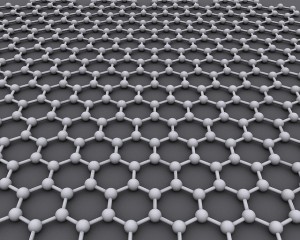Penn students jump into the fracking fray with a new technology
One of the pressing questions regarding fracking is whether or not the chemicals used to help pry the gas from tight rock formations like the Marcellus Shale leaks or migrates to drinking water supplies. But testing water for contamination and linking it directly to gas drilling has proven problematic. Imagine if you could determine whether fracking caused ground water contamination using a thin strip of single carbon atoms. That’s what two seniors studying at both the University of Pennsylvania’s Wharton school and its bioengineering department, are trying to do. Teddy Guenin and Ashwin Amurthur are finalists for a $5000 prize through the University. They’ve proposed using graphene, an ultra thin strip of carbon first produced about ten years ago, to measure minuscule amounts of the hydrocarbon benzene — down to the level of a picomolar.
“Our initial thought was that benzene is a very toxic compound that does not occur naturally, and is used in very low concentrations in [fracking fluid],” said Amurthur. “Graphene can detect [benzene] at a very low concentration.”
If frack fluid contaminates ground water, it would get diluted, and could migrate. Amurthur says graphene is several million times thinner than a piece of paper, which gives it a very high surface to volume ratio. And that makes it easier to detect such tiny amounts of benzene.
Amurthur’s partner Teddy Guenin says if they win the prize, they will also get the commercial license from Penn, which has a physics lab devoted to graphene production. “We envisioned this as something to sell to drilling companies,” said Guenin. “Somebody interested in having high quality sensing [technology] like local municipalities.”
Guenin grew up in Lancaster, where he says he began to pay attention to fracking controversies in high school. Amurthur, who is from Princeton Junction, New Jersey, says his awareness came from working with financial firms serving the industry.
Start-ups producing frack fluid tracers have already spun off from a few university research labs. Several former Duke graduate students have created BaseTrace, which uses a DNA signature to track the flow of frack water. Rice University researchers have used nanotechnology to create a signature for each well. At Duke, researchers who have spent a lot of time looking into Pennsylvania’s fracking operations are also using boron and lithium isotopes present in the flowback fluid.

















